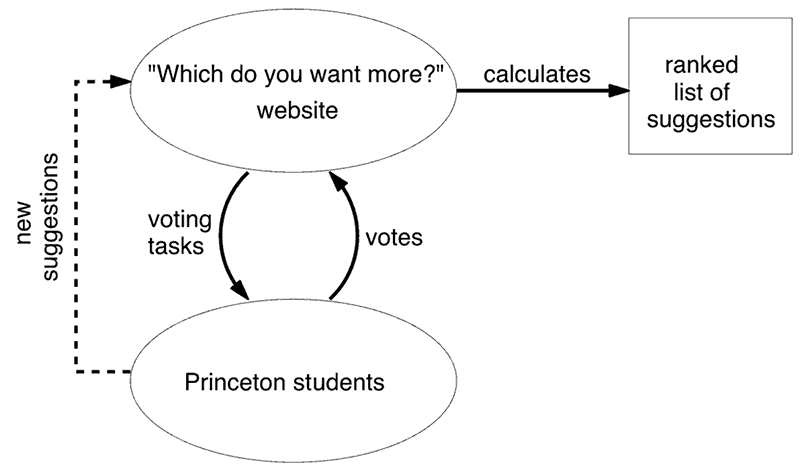Pairwise was a Ruby on Rails (2.3.x) web application that accepted a data set of users, questions, and items then created pairs of items for users and questions and returned these through an XML API. Clients could send back responses as a vote on one pair in the set. Based on these votes Pairwise performed data analysis to determine the ranking of items for each question. Additionally, singular value decomposition (SVD) was performed on the items and vote data to find sets similar items.
The source code for my version of Pairwise is here. I have also written a Ruby on Rails plugin for interactive with a Pairwise API. Work on the Pairwise API has been continued by a new developer. Below is a digram of the role the pairwise API plays.
 </a>
</a>
With the Pairwise Web Service anyone can build community-generated and community-sorted websites. These websites let the best ideas in your group or organization “bubble to the top” all in a democratic, transparent, and bottom-up process.
For example, the Princeton Undergraduate Student Government used a site like this to learn about the best ways to improve campus life. In a matter of weeks, more than 2,000 students contributed more than 40,000 votes on more than 300 suggestions, about 100 of which were uploaded by the students themselves.
In addition to text, community-generated and community-sorted information websites can be used for to handle images as was done in Photocracy, a project to study national identity and cross-national perceptions.